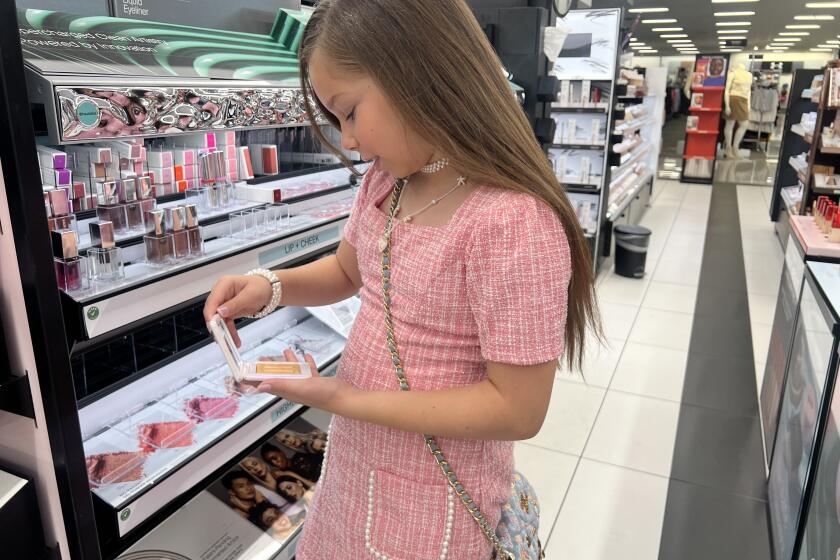Tragic Blast Draws Attention to L.A.’s Quiet Toy District
- Share via
In almost 20 years of helping build the nation’s preeminent toy industry, the four Woo brothers of Los Angeles had never encountered anything so powerfully tragic as the explosion at Imperial Toy Corp. that took four workers’ lives Wednesday.
Until the fiery accident at 7th and Santa Fe streets, the biggest news to hit the downtown toy district and its 100 mostly mom-and-pop shops came from thousands of miles away in places like Washington, D.C., and China. And safety was always discussed as an issue involving toys, not workers.
“The toy business was pretty boring,” said Shu Woo, who operates ABC Toys. Added his better known brother, Charlie Woo, who owns Mega Toys Inc.: “We’re more used to minor backaches and twisting an ankle. . . . This was a shocking catastrophe.”
Part of the shock that filled the toy industry Wednesday was in learning that Imperial repackaged explosive caps--a rare item in Los Angeles’ toy industry. Imperial, with sales of $34 million, also stood out because it was a big manufacturer.
Indeed, most of the 500-plus companies that make up the toy industry in Los Angeles County are wholesalers who import dolls, radio-controlled cars and other goods from China and other Pacific Rim countries. Moreover, these companies, on average, employ just a handful of workers, and their sales are generally small.
Some of the businesses didn’t even know a manufacturer as large as Imperial existed, and few knew what it made.
“I was personally very shaken,” said Lizy Moromisato, an office administrator at Horizon, a hobby goods shop that has been in business since 1979. Moromisato said a fire marshal stopped by her shop Thursday to make sure the firm was in compliance.
“Let’s just say the accident has really increased our awareness about safety regulation,” she said, adding that she didn’t mind the extra attention--or scrutiny.
For years, the industry grew in relative obscurity, with most of the immigrant players overshadowed by El Segundo-based Mattel Inc., the world’s largest toy company.
Mattel, which outsources its manufacturing and warehousing to eight firms in Los Angeles, accounts for 75% of the industry’s sales and 29% of the total employment of 6,026 in Los Angeles County, according to the Toy Assn. of Southern California.
“With apologies to Charlie [Woo] and his friends, toys here are Mattel,” said Jay Winter of the Foreign Trade Assn. in Los Angeles.
Even so, behind the efforts of people like Charlie Woo, who arrived from Hong Kong in 1968 to study physics before turning his attention to business, Los Angeles has emerged as the gateway to most of the toys sold in U.S. retail stores and increasingly abroad. Woo and his brothers started out in 1979 importing toys from Hong Kong. They sold the goods to people who worked in restaurants and other jobs who would buy toys and sell them at weekend flea markets. As business grew, Woo bought four warehouses, and his customers became tenants. As the industry grew, it helped revive economically stricken areas of Los Angeles.
Thomas Tseng, program director at Community Development Technologies Center in Los Angeles, says about 300 of the toy industry’s firms are located in neglected areas of south and central Los Angeles. Tseng’s organization inherited the assets of RLA, the riot-recovery organization that brought the toy industry out of the woods by helping form the Toy Assn. of Southern California.
Tseng, Woo and others say the area’s toy industry has grown because of the access to the nation’s two largest ports as well as the improved economy. Preliminary figures from Dun & Bradstreet indicate that there are 50 more toy firms in Los Angeles County today than in 1995, and sales in 1997 are up 10% from two years ago.
May Cheung, manager at Tai Tung International, a wholesaler of plush toys, radio cars and other products, said her 13-year-old firm has enjoyed strong growth in Mexico and South America, where 85% of the company’s imported toys now wind up.
Two years ago, she said, Tai Tung bought the vacant former Coca-Cola building, giving the business 10 times more space to warehouse toys. For the first time, Cheung said she saw television crews Wednesday in the area.
“For us, we don’t sell gun [products],” she said. “We don’t like to sell guns.”
* BLAST VICTIMS ‘LIKE SISTERS’
The four killed in the blast shared an enduring friendship. A1
(BEGIN TEXT OF INFOBOX / INFOGRAPHIC)
TOY CENTRAL
Los Angeles County’s toy industry, believed to be the biggest in the nation, is dominated by mom-and-pop wholesalers who operate in central and south Los Angeles. The industry has surged in the last few years, as evidenced by the bulging imports arriving through the Port of Long Beach.
Toy Industry in Los Angeles County
*--*
No. of Employment Sales firms (millions) MANUFACTURING Dolls and stuffed toys 33 211 $8.5 Toys and games 91 2,842 3,387 WHOLESALE Toys and hobby goods 399 2,973 985 Totals 523 6,026 4,381
*--*
Toy Imports Through Port of Long Beach
*--*
metric tons value of imports 1994 445,000 $2.4 billion 1995 481,000 2.9 1996 570,000 3.3
*--*
Sources: Dun & Bradstreet; Toy Assn. of Southern California; Port of Long Beach
More to Read
Inside the business of entertainment
The Wide Shot brings you news, analysis and insights on everything from streaming wars to production — and what it all means for the future.
You may occasionally receive promotional content from the Los Angeles Times.











